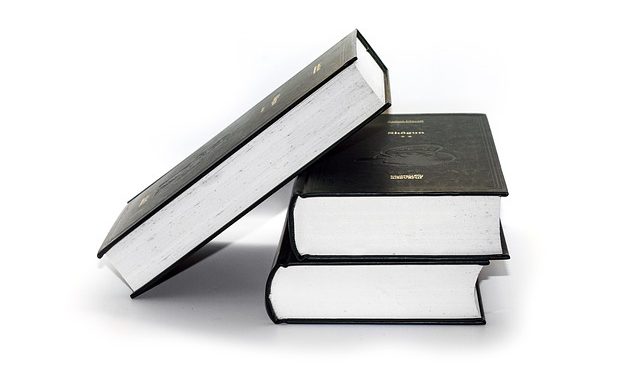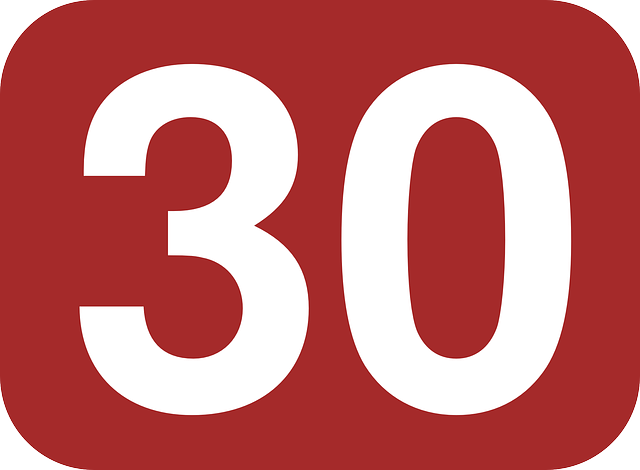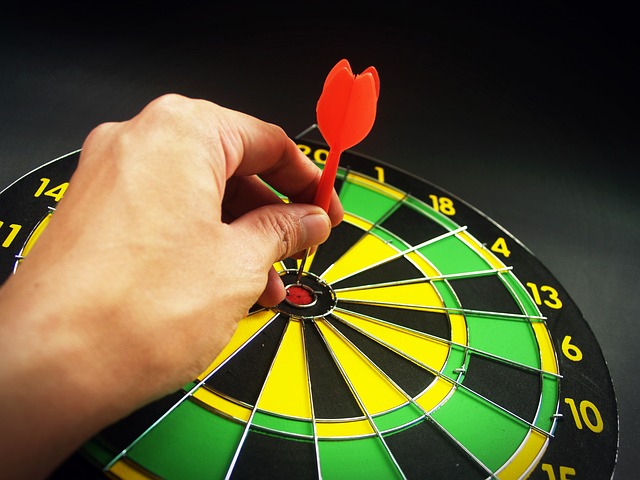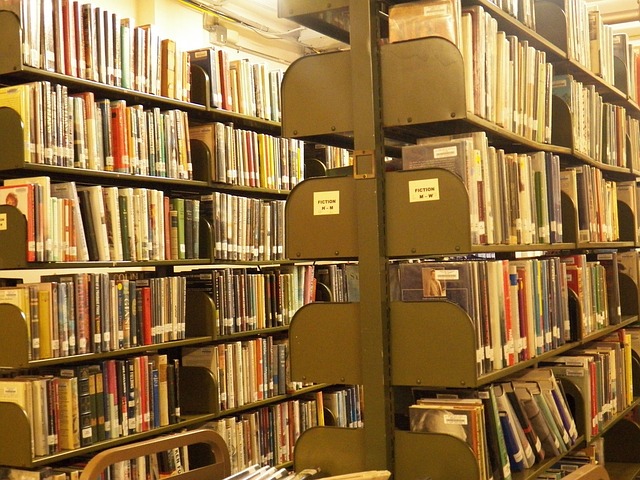
If you’re taking the TOEFL soon, you might be curious about what kind of TOEFL Reading score you’ll need to get in order to do well on test day. What is a good TOEFL Reading score overall? And what’s a good Reading score for you specifically?
In this guide, we’ll explain what a good TOEFL Reading score is using percentiles and then teach you how to set your own TOEFL iBT Reading score goal. Then, you can use our TOEFL Reading score calculator so that you can estimate the number of raw points you’ll need in order to hit your goal score.
What’s a Good TOEFL Reading Score Overall?
A good TOEFL Reading score for you is any score that’s high enough to get you into all of the schools you wish to attend. But to define a good Reading score more objectively, we can use percentiles. Percentiles tell you how your scores compare with those of other test takers (they do not show you what percentage of questions you answered correctly).
In particular, your TOEFL Reading percentile tells you what percentage of test takers you scored higher than on the Reading section. So the higher your Reading percentile is, the more test takers you’ve scored higher than and therefore the better your Reading score is.
The Reading section, like the Listening, Speaking, and Writing sections, is scored on a scale of 0-30, with 0 being the minimum and 30 the maximum. Here are the current TOEFL Reading percentiles:
| Percentile | TOEFL Reading Score |
| 90 | 29 |
| 75 | 26-27* |
| 50 | 22 |
| 25 | 17* |
| 10 | 11-12* |
Source: Test and Score Data Summary for TOEFL iBT Tests
*Estimated score or score range.
By the way: we have built the world's best online TOEFL course. Get online practice (TPO-sytle!) and individual grading and feedback on Speaking and Writing.
To be fair, it's possible to get a good TOEFL score studying alone. But PrepScholar is the world's most effective TOEFL course if you are worried about the TOEFL and are struggling to improve your score.
Learn how you can improve your TOEFL score by 15 points today.
The 50th percentile represents the middle score, or median. This means that 50 percent of test takers scored lower than you and 50 percent scored higher than you. Generally, any score that places you in the top half of test takers—that is, any score above the median—can be considered a good score. With the TOEFL Reading section, then, a solid score is anything above 22.
As you can see in this chart, a score of 26-27 is very good because it places you in the top 25 percent of test takers. If you were to score even higher—say, a near-perfect score of 29—your Reading score would be better than that of 90 percent of test takers, making it a fantastic score!
By contrast, anything below the median (particularly anything in the bottom 25 percent) can generally be considered a poor Reading score. So if you got 17 on Reading, your score would be worse than that of 75 percent of test takers.

What’s a Good TOEFL Reading Score for YOU?
Ultimately, what matters most isn’t your percentile but that you get a TOEFL Reading score high enough to secure you admission to your schools. This means that good TOEFL Reading scores can vary depending on the schools you’re applying to and what their TOEFL score requirements are.
Many schools require (or strongly recommend) specific minimum TOEFL scores for admission. These minimums are generally composite scores, but some schools may also require individual section scores—including, at times, a minimum Reading score. So if your school requires a particular Reading score, you must meet or exceed this score in order to give yourself your best chance of admission.
Naturally, the exact Reading scores schools want can vary widely. Some schools require Reading scores below the median (22), whereas others require scores in the mid- to upper 20s. For example, Cornell’s graduate school requires a minimum 20 Reading score (39th percentile), while Johns Hopkins strongly recommends a minimum 26 on Reading (72nd percentile). That’s a 33 percent difference in percentiles!
But what TOEFL Reading score should you aim for? Read on to find out!
How to Set a TOEFL Reading Goal Score
Your TOEFL Reading goal score is the score most likely to qualify you for admission to all of the schools you’re applying to. This means you’ll need to reach or exceed all of your schools’ minimum (required or recommended) Reading scores. (Additionally, you’ll need to hit any minimum Listening, Speaking, or Writing scores, if given.)
Below, we teach you how to set a TOEFL Reading score goal based on your schools’ TOEFL score requirements. For more information on how to set a total TOEFL goal score, check out our guide to a good TOEFL score.
Step 1: Make a Chart
First, make a chart with all of your schools and their TOEFL score requirements (for the Reading section and overall). Fill in your school names in the left column, and then write “School,” “Minimum Reading Score,” “Minimum Total Score,” and “Notes” across the top.
Here’s an example to help you out: Anika is applying for Ph.D. programs in history. Here is her chart:
| School | Minimum Reading Score | Minimum Total Score | Notes |
| Boston University | |||
| University of Minnesota | |||
| Purdue University | |||
| American University |

Step 2: Find TOEFL Score Information Online
Next, it’s time to research! To fill out your “Minimum Reading Score” column, you’ll need to find the minimum Reading requirements for each of your schools. Unfortunately, most schools only release minimum total scores, making it difficult to find specific TOEFL Reading requirements. (We’ll talk more about what to do in this situation in just a moment.)
On Google, search for “[School Name] TOEFL requirements” or “[School Name] minimum TOEFL scores.” Look for pages from your school’s official website. Most often, TOEFL score information will be available on the following page types:
- Application materials
- Admission requirements
- International students
- FAQs
- Undergraduate admission
- Graduate program/departmental webpages
Once on a page, use ctrl + F to look for keywords such as “TOEFL,” “English,” and “proficiency.” For more information on how to find TOEFL requirements for undergraduate and graduate programs, refer to our article on TOEFL scores for colleges (coming soon).
If your school maintains a required minimum Reading score, write this in your chart along with the total minimum score (if given) and any other relevant notes, such as required scores for other TOEFL sections.
On the other hand, if your school only lists a minimum total score (which is far more common), you can use this information to estimate the Reading score you’ll need to aim for. To do this, simply divide the required total score by 4; this will give you an estimated minimum score for each section of the exam (including Reading). Record this score in your “Minimum Reading Score” column, taking care to note it is an estimate instead of a hard-and-fast requirement.
Let’s look back at our example now: Anika looks online and discovers that both Boston University and Purdue require minimum TOEFL scores for each section of the exam. She also sees that the University of Minnesota requires specific scores for Reading and Writing.
Unfortunately, American University maintains only a minimum total score of 100. But Anika can use this information to get an estimated Reading score. So she divides 100 by 4 and gets an estimated Reading score of 25.
Here is Anika’s chart again, this time with her schools’ TOEFL score information filled out:
| School | Minimum Reading Score | Minimum Total Score | Notes |
| Boston University | 21 | 84 |
Minimum required scores
|
| University of Minnesota | 19 | 79 |
Minimum required Writing score: 21 |
| Purdue University | 19 | 77 |
Minimum required scores
|
| American University | 25 | 100 | Estimated Reading score |
Step 3: Figure Out Your Reading Goal Score
Finally, you’ll use your chart to figure out your Reading goal score (as well as your total goal score). To do this, look for the highest score in your “Minimum Reading Score” column; this will be your TOEFL Reading goal score, as it’s the only Reading score that meets the TOEFL score requirements of all of the schools you’re applying to.
Repeat this process to get your total goal score. Once again, the highest score (this time, in your “Minimum Total Score” column) will be your total goal score. I strongly recommend setting a total TOEFL goal score since your total score is usually the most important TOEFL score you’ll need for admission. (In other words, some schools don’t care about your Reading score—they just want to see that your total score is high enough for admission.)
Let’s take a final look at our example. Based on Anika’s chart, her TOEFL Reading score goal is 25 (the estimated score for American University) and her total goal score is 100. So if she can get at least 25 on the Reading section, her TOEFL iBT Reading score should be high enough to fulfill all of her schools’ TOEFL Reading score requirements.
With the TOEFL, you don’t typically need to exceed your goal score. Although getting a higher score certainly doesn’t hurt your application, it won’t necessarily improve your application either. This is because most schools simply want to see that you are sufficiently competent in English and will be able to do well at an English-speaking school.
Once you’ve got your TOEFL iBT Reading score goal, I recommend taking TOEFL practice tests to ensure you’re on track to attaining your goal score. But how many correct answers will you need in order to be able to hit your Reading goal score on test day?
Want to improve your TOEFL score? We have the world's leading TOEFL course.
Built by world-class instructors from Harvard and MIT, the course offers individual review, interactive lessons, and realistic online praactice, at an affordable price! It's the fastest way to get your target TOEFL score.

What Raw Score Do You Need to Reach Your TOEFL Reading Score Goal?
As we explained at the beginning, any score above 22 can be considered a good Reading score (when basing the definition of a good TOEFL score on percentiles). But what does 22 mean exactly?
According to the TOEFL scoring system, 22 is a scaled score that has been converted from a raw score. Raw scores are the initial scores you get for each section of the TOEFL. Specifically, they’re based on the total number of points you earn (or, more generally, the total number of questions you answer correctly).
On the Reading section, each question is worth 1-3 raw points. (Note that you do not lose any points for incorrect answers.) Most Reading questions are multiple choice and worth 1 point each, but you’ll also get a “Reading to Learn” question worth 2-3 points at the end of each question set. (Questions worth more than 1 point are explicitly marked.)
But each TOEFL is different. As a result, your Reading raw score range will differ depending on how many total questions you have and the point value of each question. The maximum number of raw points you can have on TOEFL Reading is 45, but some tests may have slightly lower maximums.
Unfortunately, ETS (the maker of the TOEFL) doesn’t give any details as to how raw Reading scores convert into scaled scores. Nonetheless, we can use a sample conversion chart to see how raw Reading scores roughly convert into scaled scores.
Our TOEFL Reading score calculator below allows you to estimate the number of raw points you’ll need in order to hit your Reading goal score on test day. Remember that this chart is only an estimate, as raw score conversions will vary slightly with each TOEFL.
| Raw Reading Score | Scaled Reading Score |
| 44-45 | 30 |
| 41-43 | 29 |
| 39-40 | 28 |
| 37-38 | 27 |
| 36 | 26 |
| 34-35 | 25 |
| 33 | 24 |
| 32 | 23 |
| 31 | 22 |
| 30 | 21 |
| 29 | 20 |
| 28 | 19 |
| 27 | 18 |
| 26 | 17 |
| 25 | 16 |
| 24 | 15 |
| 23 | 14 |
| 22 | 13 |
| 21 | 11 |
| 20 | 10 |
| 19 | 9 |
| 18 | 8 |
| 17 | 7 |
| 16 | 5 |
| 15 | 4 |
| 14 | 3 |
| 12-13 | 2 |
| 10-11 | 1 |
| 0-9 | 0 |
According to this chart, to get a 50th percentile score (22), you need a raw score around 31. This means you can potentially miss up to 14 points on test day. By contrast, to get a 75th percentile Reading score (26 or 27), you need at least 36-38 raw points. And to get an extremely high 90th percentile score (29), you have to get 41-43 points, meaning you can’t miss more than 2-4 raw points in total!
Let’s look back at our example with Anika. As we discovered in the last section, Anika’s Reading goal score is 25. To get this score, then, she needs to earn 34-35 raw points. In other words, she can miss up to 10 points on the Reading section and still meet her (scaled) goal score of 25.

Conclusion: So What’s a Good TOEFL Reading Score?
In summary, a good TOEFL iBT Reading score is any score that’s high enough to meet all of your schools’ TOEFL Reading score requirements. This means that good TOEFL Reading scores can vary depending on where you’re applying. Another way of defining a good TOEFL Reading score is by looking at percentiles. In general, any score above the median (22) can be considered a good Reading score.
To figure out what Reading score you should aim for on test day, you’ll need to set a goal score. By hitting your goal score, you’ll give yourself the highest chance possible of gaining admission to all of your schools.
To find your goal score, make a chart and research each of your schools to figure out what their TOEFL score requirements are and whether they require minimum Reading scores. Record any required (or recommended) minimum TOEFL scores in your chart. If a school doesn’t maintain any specific minimum Reading score, divide its required total TOEFL score by 4 to get an estimated Reading score. In the end, the highest Reading score in your chart will be your Reading goal score.
As you prepare for the TOEFL and hone your English-reading skills, be sure to use our TOEFL Reading score calculator (i.e., the TOEFL Reading score table above) to help you estimate the number of raw points you’ll need in order to hit your Reading goal score on test day.
Last but not least, good luck!
What’s Next?
Want to get a great score on TOEFL Reading? Read our expert tips on how to ace the TOEFL Reading section, and study hard with our top eight TOEFL Reading resources!
Are you struggling to understand TOEFL reading passages? Our comprehensive guide explains how to approach the different kinds of reading passages on the TOEFL as well as what you can do to prepare for them.
Need help getting started? Learn how to register for the TOEFL and get tips on how to prepare.
Ready to improve your TOEFL score by 15 points?
Download our best TOEFL Strategy eBook (valued at $14.49) for FREE! Learn the top 5 strategies you must know to improve your TOEFL score. Download it for free now:
